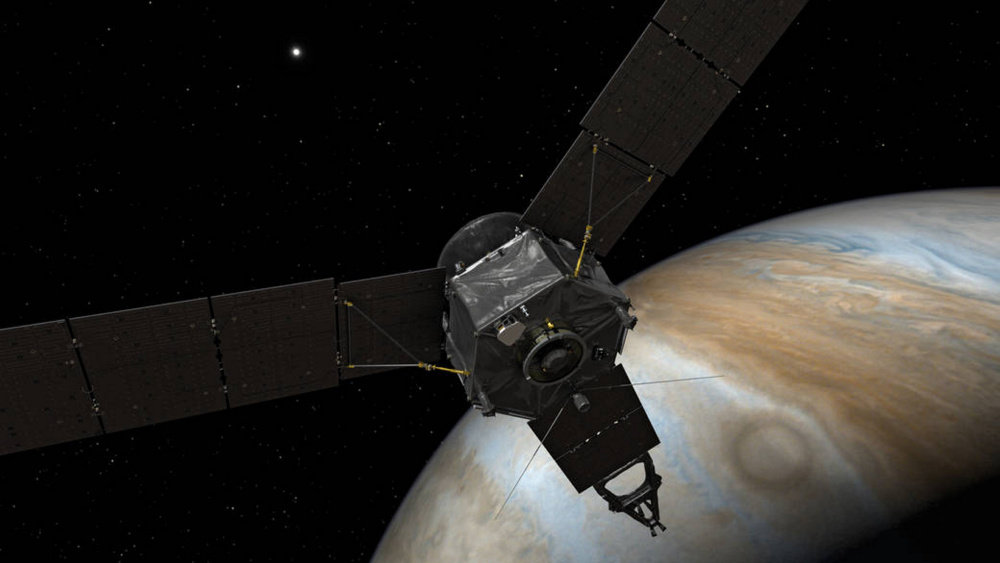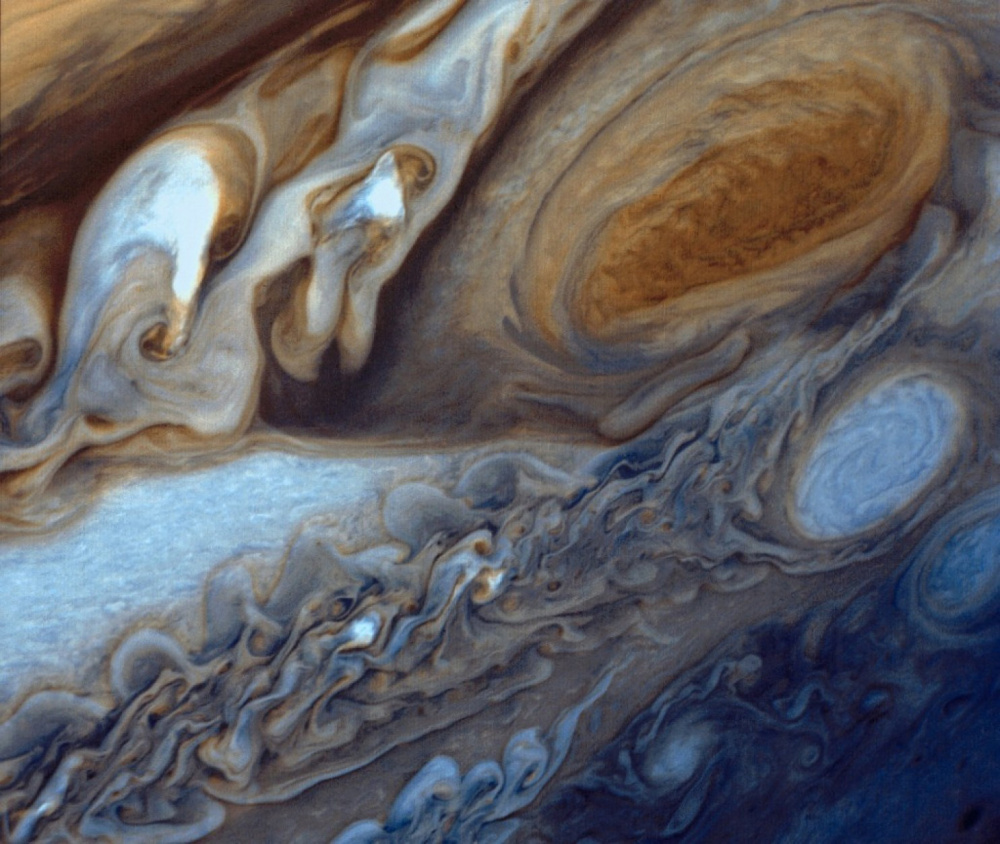This Independence Day, millions of Americans will look to the sky to watch dazzling fireworks. But across the country, scientists will be looking up for an entirely different reason: On July 4, NASA’s Juno spacecraft will enter an orbit of Jupiter, giving us an unprecedented window into the history of our solar system’s oldest planet.
Jupiter is a strange world, but Juno will make it a little more familiar. In doing so, it could give scientists valuable insight into our own origin story – and clues in the ongoing hunt for alien life.
Jupiter is a planet unlike any other. If every other planet in our solar system teamed up to form one massive monolith of a world, Jupiter would still be two and half times heavier. That incredible mass only becomes more impressive when you consider the fact that Jupiter is a gas giant: With the exception of a rocky core that may or may not exist at its very center, the planet is made entirely of gaseous and liquid elements. When a quarter of your mass comes from helium molecules, it takes a lot of space to carry any real weight. More than 1,300 Earths could fit inside it.
At that size, Jupiter comes close to being more of a sickly star than a powerful planet. In fact, scientists have found many alien stars that bear a striking resemblance to the fifth planet from the sun. Some even have raging storms like Jupiter’s Great Red Spot, which has been churning in the planet’s atmosphere for hundreds of years.
“Jupiter is a planet on steroids,” principal investigator Scott Bolton of the Southwest Research Institute said during a June 16 press briefing. “Everything about it is extreme.”
Add to these superlatives the fact that Jupiter was likely the first planet to form in our solar system – perhaps even pushing some other early comers out into space with its incredible gravity, paving the way for the planets we know today – and it’s no wonder that scientists want to know more about the planet.
Enter Juno. Launched in 2011, the basketball-court-sized spacecraft will be the eighth vessel to visit Jupiter but the first to probe below the gas giant’s thick cloud cover, giving scientists a peek at what lies beneath. It will also make the very first passes over the planet’s north and south poles. And it will do all this while surviving radiation levels and a magnetic field like no probe has seen before. Barring the sun itself, Jupiter’s radiation levels are the harshest in our solar system. Over the course of its year-long primary mission, Juno will be exposed to the equivalent of over 100 million dental X-rays.
The planet is surrounded with electrons, protons and ions that zip around almost at the speed of light. Scientists believe that this hostile environment is created by a layer of liquid metallic hydrogen that sits below Jupiter’s cloud cover. It’s under so much pressure that it conducts electricity, when combined with Jupiter’s super-quick rotation, this creates a massive magnetic field.
This field creates stunning aurorae like our Northern Lights when confronted with excited particles spewed by Jovian moon Io’s volcanic activity.
Send questions/comments to the editors.




Success. Please wait for the page to reload. If the page does not reload within 5 seconds, please refresh the page.
Enter your email and password to access comments.
Hi, to comment on stories you must . This profile is in addition to your subscription and website login.
Already have a commenting profile? .
Invalid username/password.
Please check your email to confirm and complete your registration.
Only subscribers are eligible to post comments. Please subscribe or login first for digital access. Here’s why.
Use the form below to reset your password. When you've submitted your account email, we will send an email with a reset code.